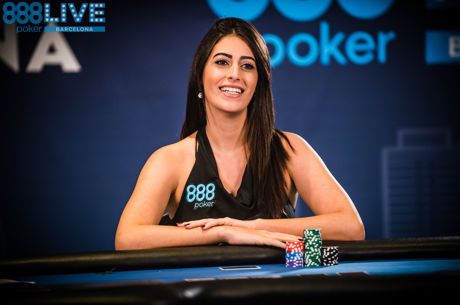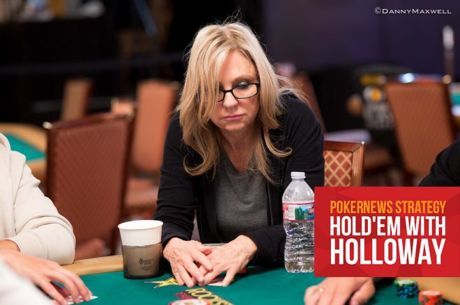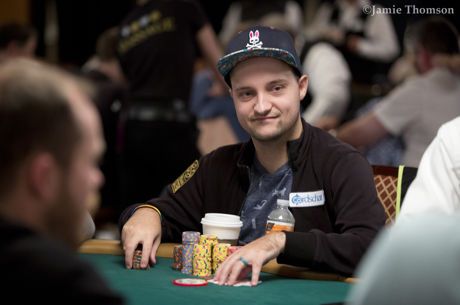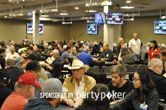When Facing River Shoves, Check Your Hand for Blockers to Possible Bluffs
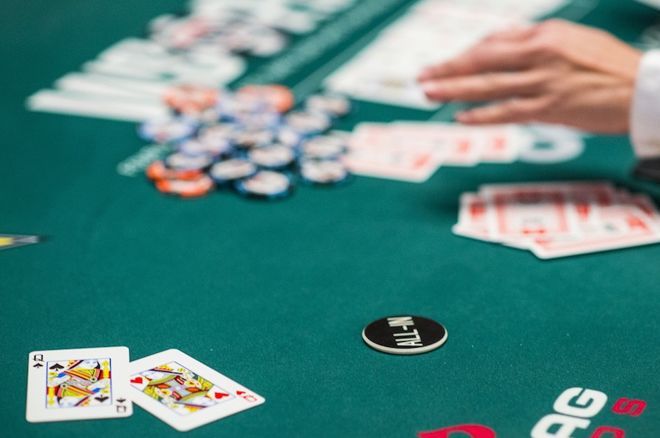
Sometimes getting stacked is unavoidable. The stronger the hand, the clearer the call, right?
Not necessarily. What cards you hold in your hand matter, and sometimes — as illustrated in the following hand — they might help you estimate more accurately what hand your opponent has and thus enable you to find a fold.
A Quiet Flop, Followed by Action on the Turn
The game was $0.50/$1 no-limit hold'em, six-handed. Two relatively experienced players were left to themselves in the blinds, each having around $130 in his stack. The small blind tried to steal, raising to $3, but this bet was matched by the big blind. Off to the flop they went — J♠4♣4♦ — and both players checked. Boredom reigned.
On the 8♦ turn, the action began to pick up. Into the $6 pot the small blind bet $4.50, and the big blind called.
When the small blind does not continuation bet an innocuous flop like this one, he is representing something — that is, a hand with some sort of showdown value, or more specifically, a hand with which he doesn't need to bluff.
Almost every weak hand that raises preflop (outside of seven-deuce) has a hope when bluffing this flop, because they all have either an overcard or some sort of backdoor straight draw or both. 9-7, 8-5, 7-6, K-9, Q-8, even 3-2 — just about every hand that completely misses this flop has turn cards to fire if the continuation bet gets called.
Meanwhile J♠4♣4♦ is going to be tough for the big blind to defend on. He'd have to call flop with a lot of king-high and even good queen-high hands, hoping either to improve, to take the pot away with position, or to show down the best hand. Such are the scraps of hands the blinds sometimes have to hold onto when they're fighting for the scraps of the pot!
The main point here is that when the small blind doesn't feel much need to bet the flop, he is indicating he has something better than all that 8-5-type junk listed above. That something could be hands like T-T or A-8 that are going for pot control. With tens the SB can value bet twice later, while with ace-eight he's just trying to get to the river (more or less). All of that means when the 8♦ falls on the turn and the small blind starts betting, his hand looks more like T-T or A-8 or J-2 than a Q♦10♦-type bluff.
When the big blind calls on the turn, we cannot be too sure what to think. Many big blinds, with nothing going, might be reluctant to bluff at the flop for the very reason that they might assume the small blind is always calling. Some will go for it regardless with hands like 7-5-suited — after all, they have backdoor draws of their own. And if the small blind is check-calling with ace-high, the seven and five are both live, too.
Back to the Action
The river brought the Q♠, making the final board J♠4♣4♦8♦Q♠, and the small blind checked once again.
With the pot $15, the big blind decided an overbet was in order and bet $19.25. Such a bet looks like the BB is representing a straight with T-9 or a bluff with a hand that turned a gutshot (like 7-5, 7-6, 6-5, or 9-7) and didn't get there. Or (perhaps) the BB flopped huge with a weak defend like J-4? Hard to say.
In any event, there wasn't too much time for further contemplation, as the small blind check-raised all in with the $122.82 he had behind.
Looking back to the small blind's check on the flop, this show of strength on the river suggests the SB might have had a hand strong enough to check-raise on the flop — say, K-J — but missed the opportunity when the BB checked behind. Now he's gotten his chance, but he didn't just shove all in over a regular river bet — it was an overbet. It would take a well and truly strong hand to come over the top of that.
Bluffs that make sense for the small blind are in supply, however. Both T-T and 9-9 block the only straight doubly. The small blind could have cautiously checked the flop and felt comfortable to bet the turn, then didn't fancy his chances check-calling on the river. So in an effort to get a random QxXx in the big blind's hand to fold, he let it rip, knowing T-9 would be a hard hand for the BB to have given the two cards the small blind had.
In any event, the small blind's shove makes for a tough decision for the big blind, who we can reveal at this point actually had 10♠9♦ and had rivered the straight.
Looking at it now from the BB's perspective, he has to see that T-T and 9-9 (i.e., two possible bluffing hands) are in fact unlikely for the SB to have since the big blind blocks 50 percent of the combinations of both. In fact, a hand with a queen or a four in it — something that could beat a bluffing T-T that also blocks full houses — would be a better bluff-catcher than his 10♠9♦.
The small blind's hand looks well and truly nutted, not just because he shoved over the overbet, but equally because he checked the flop. The flop was so good to bluff, but he resisted. So why is he bluffing now for all the marbles?
Getting the Bad News
The big blind called with that bluff-catching, bluff-blocker 10♠9♦. He soon saw he backed into an unfortunate situation, indeed.
The small blind revealed what indeed looked like a missed flop check-raise, the hand that hit the gin river card — Q♦Q♥. Click the play button to watch the hand below:

